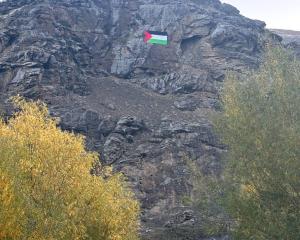
This week, landowners received detailed plans of the upgrade options along with the estimated costs.
"I’m confident there’s a financially viable project for the catchment which will have significant benefits, not only to irrigators and farmers, but also to the environment and the wider community," Manuherikia Catchment Water Strategy Group chairman Allan Kane said yesterday.
Landowners have until October 25 to register their expression of interest, saying how many hectares they want to irrigate.
"... the amount of interest shown by landowners now will determine which option goes ahead, if any," Mr Kane said.
Information sessions are planned for landowners over the next couple of months as well as one-on-one meetings and a community forum, open to the general public.
The options include increasing the capacity of Falls Dam by raising it 6m or building a new dam directly downstream of Falls Dam, either 15m or 20m higher than the existing dam.
The present water distribution network might also be extended, depending on interest from landowners.
The number of hectares landowners want to irrigate will determine which option is adopted.
Estimated costs for dam construction work range from $28million to $80million and the estimated cost of the largest distribution option — mostly irrigation races but some pipework — is $100million.
When landowners registered their interest, they would be asked to give $50 per hectare to fund the next stage of the study.
This did not commit them to buying shares in the company but did give them priority when shares were allocated, Mr Kane said.
The money would be used for further geotechnical work on the proposed dam and to reconfirm the hydrology and seismic modelling, to start the resource consent and land access processes and establish the new company.
The Otago Regional Council is considering setting minimum flows in the Manuherikia River.
Having greater dam storage capacity would enable minimum flows in the river to be held at higher levels, providing a healthier habitat for aquatic life and an improved recreational asset, he said.
"The higher the dam the easier it will be to meet minimum flow requirement, without water restrictions being placed on landowners."
The estimated cost for work on the dam varies between present irrigators, who own the existing asset, and possible new irrigators.
It ranges from $1875 to $4000 per ha of irrigated land.
The land to be covered by the upgraded scheme is divided into five zones.
Off-farm distribution costs (upgraded or new races or pipeline to the farm gate) vary between zones and range from $1200 to $4500 per ha of irrigated land.












